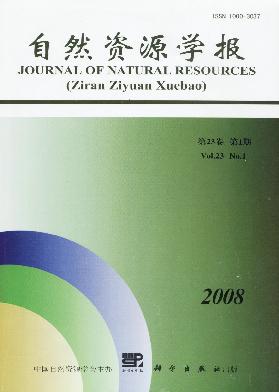Special Column:Celebration of the 70th Anniversary of IGSNRR, CAS
YAO Cheng-sheng, ZHU He-jian
Based on the food security index (FSI), mean value of food security index (MVFSI), variable coefficient of food security index (VCFSI), the security changing trends of nine kinds of food in Fujian province from 1991 to 2005 were quantitatively analyzed, which were the grain, vegetables, fruit, beef and cotton, poultry, meat, eggs, milk and aquatic products. The results showed that: The security situation of grain production was in an extremely low level, the gap between supplies and demands of grain became bigger year by year because of the linear increasing of the indirect grain consumption, which was caused by the overproduction of meat and eggs of high-grain consuming products. Entering the year 2000, the shortage of grain became more and more serious; for example in 2005, the shortage amount of grain was 1.65 times of its output. The MVFSI value of beef and cotton, poultry products and milk were 0.16, 0.13 and 0.05, which meant that the production of these three kinds of food can only meet the requirement of the people in Fujian province. But their VCFSI values were all very big, which meant that their outputs fluctuated obviously, and their secure situation was in a low level. The case of milk was particularly so because it could not satisfy the demands of the people since 1998. The FSI value of meat and eggs were all bigger than 0.40 during the past 15 years, their MVFSI values were 0.48 and 0.52, and their VCFSIs were both very small, which meant that the meat and eggs were in a relatively high security level. But these two kinds of food belong to grain-consuming animal products,facing an extremely low security level of grain in Fujian province. Their security level were totally depended on the grain import outside of Fujian, therefore their security was greatly influenced by the fluctuating of the grain output outside; as a result, the security level of the two kinds of food was not so optimistic. The FSI value of fruit and aquatic products were all bigger than 0.70 in the past 15 years, their MVFSIs were 0.76 and 0.91, and their VCFSIs were lower in 0.07 and 0.01, which meant that the two kinds of food were in an extremely high security level, and the surplus could be sold or saved. Since 1991, the production of vegetables has been highly developed, therefore its security level has been increased continuously. As a whole, the food security level of Fujian province was not so optimistic. Finally, in order to improve the food security level in Fujian province, some advices and policies were put forward.
